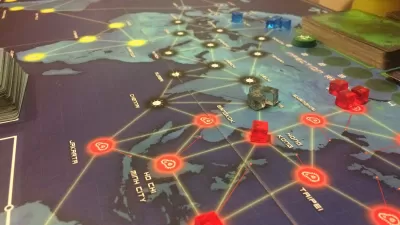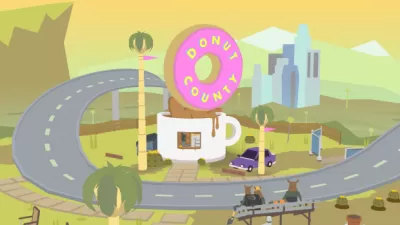It's a video game, or a master course in eschatology.
William Vitka shares news of the video game "Tom Clancy's Division 2," set in a post-apocalyptic Washington, D.C.
A surprising level of urban design and planning consideration went into designing the game's setting, according to Vitka. Here, Vitka quotes the worlds of Creative Director Julian Gerighty, describing the difference between Washington, D.C., and the setting of the first "Division" game, New York City:
"New York was hampered by the fact that it is fairly monotone. It’s canyons of steel and glass. D.C. … this is a challenge. You’ve got nature, you’ve got water, you’ve got huge governmental buildings, you’ve got commercial areas, you’ve got suburbs … There’s just a lot more visual differentiation. And that leads to gameplay differentiation as well."
If you've ever fantasized about what Washington, D.C. would look like after a weaponized super virus brings society to the brink of collapse, the article also includes a slideshow with lots of compelling images of places like the White House, the Capitol, and the Lincoln Memorial in states of disrepair one would expect in the event of Armageddon.
FULL STORY: How The Division 2 video game recreated and destroyed DC

Alabama: Trump Terminates Settlements for Black Communities Harmed By Raw Sewage
Trump deemed the landmark civil rights agreement “illegal DEI and environmental justice policy.”

Study: Maui’s Plan to Convert Vacation Rentals to Long-Term Housing Could Cause Nearly $1 Billion Economic Loss
The plan would reduce visitor accommodation by 25% resulting in 1,900 jobs lost.

Planetizen Federal Action Tracker
A weekly monitor of how Trump’s orders and actions are impacting planners and planning in America.

Wind Energy on the Rise Despite Federal Policy Reversal
The Trump administration is revoking federal support for renewable energy, but demand for new projects continues unabated.

Passengers Flock to Caltrain After Electrification
The new electric trains are running faster and more reliably, leading to strong ridership growth on the Bay Area rail system.

Texas Churches Rally Behind ‘Yes in God’s Back Yard’ Legislation
Religious leaders want the state to reduce zoning regulations to streamline leasing church-owned land to housing developers.
Urban Design for Planners 1: Software Tools
This six-course series explores essential urban design concepts using open source software and equips planners with the tools they need to participate fully in the urban design process.
Planning for Universal Design
Learn the tools for implementing Universal Design in planning regulations.
Caltrans
Smith Gee Studio
Institute for Housing and Urban Development Studies (IHS)
City of Grandview
Harvard GSD Executive Education
Toledo-Lucas County Plan Commissions
Salt Lake City
NYU Wagner Graduate School of Public Service





























